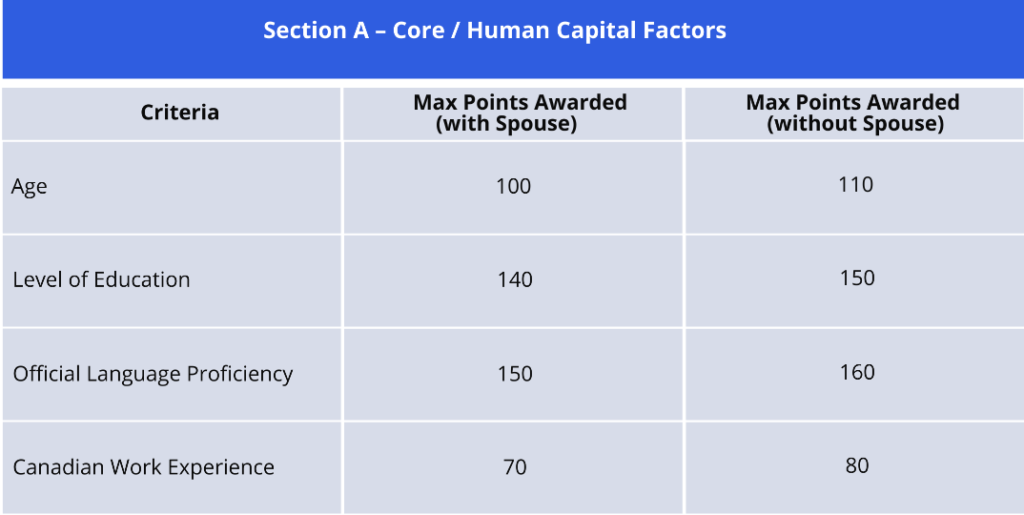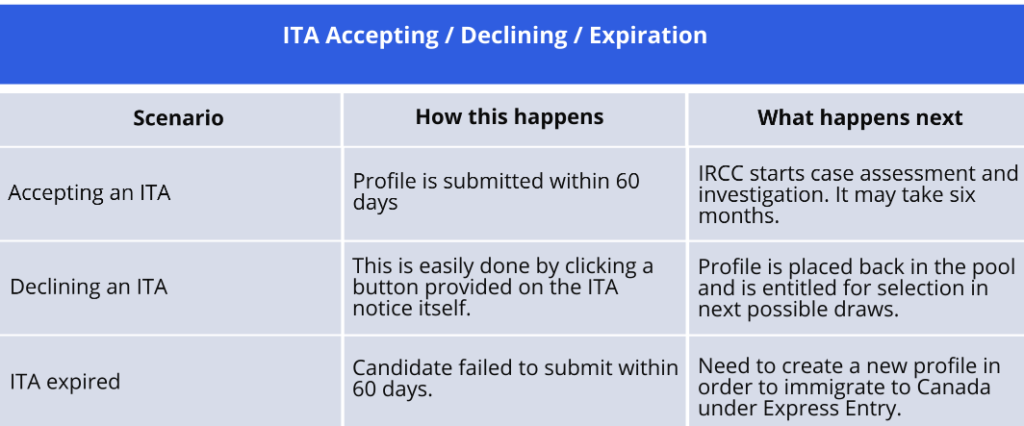
There are some primary things that you must complete before you go to the online application process. You must have a valid Language Test Result and ECA. After that, you have to calculate your CRS Score to check your position in the next draw.
You must have your language test result ready to use. To submit your Express Entry Profile you must demonstrate your language proficiency in either English or French. The minimum required score varies between the three Express Entry-aligned programs. For FSWP, you must have CLB 7.
Immigration, Refugees and Citizenship Canada (IRCC) must evaluate non-Canadian education standards. For ECA, IRCC has selected the following bodies:
Before you proceed with an ECA authority, you must know their requirements, process, and you can contact us for any assistance
The Comprehensive Ranking System (CRS) is utilized by the Express Entry system to rank candidates who apply through the federal government’s skilled worker programs. These programs include the Federal Skilled Worker Program, the Federal Skilled Trades Program and also the Canadian Experience Class. These are all planned to achieve in-demand occupations which will continue to have deficits on the increase within the following five years across all of Canada’s provinces, excluding Québec which has its own programs.
The complete CRS Scoring system is broken up into different sections with different blends resulting in higher points.




A. Core/human capital + B. Spouse or common-law partner factors + C. Transferability factors + D. Additional points = Grand total – Maximum 1,200 points
If your CRS Score is lower than required then you should find out how to increase your CRS score. There are many ways you can improve your CRS score based on the criteria above.
You must create an Express Entry profile to enter into the Express Entry Pool. Based on your profile, you will be automatically provided a score and you will be ranked accordingly. The total score is based on 1200 points. The higher a candidate’s CRS score, the higher the likelihood they will receive an Invitation to Apply (ITA). IRCC determines cut-off score based on Canada’s economic situation, job vacancy and Government rules.
Important Documents to keep with you while creating your profile
You don’t need to upload documents to submit a profile, but you may need information from some or all of these documents:
Once your profile has been finalized and all required information has been saved into the profile, now it is time to submit it. You have 60 calendar days to complete the whole application and submit Express Entry profile. Otherwise, you’ll have to start again.
You will receive the following two things once your profile is submitted:
Applicants will need these numbers if:
Many individuals get upset when they calculate their CRS score and find that their score is less than the cut-off score. Some Provincial Nominee Programs (PNPs) are aligned with Express Entry and would provide you extra 600 points! The following provinces are popular for their PNP Express Entry programs. Note that Quebec does not participate in the Program because Quebec has its own Immigration program.
Here are the steps to follow to get Nomination from PNP and add additional 600 points into your total CRS Score. So be sure to get ITA in the next draw!

Each Province has its own In Demand Occupation List and eligibility requirements and PNP fees (if required), check everything clearly or contact us immediately for PNP guidelines.
An Invitation to Apply is the ultimate thing you want from the Refugees and Citizenship Canada (IRCC). Without receiving an ITA, you cannot apply for the Canadian permanent residence. The successful candidates with an ITA need to lodge a visa application by submitting a perfect set of documentation.
The invitation to apply (ITA) is valid only for 60 calendar days. IRCC will not allow Extensions, no matter what. Therefore, it’s a great decision for candidates who haven’t yet been invited to collect, organize, and assess all of their supporting documentation. Many candidates think that they will organize and prepare everything once they got their ITA. But this will be a wrong decision as one could miss the chance to apply for the Permanent Residency.
What if I miss the 60-day deadline?
If a candidate misses the 60-day deadline, the invitation to apply will be treated as invalid. The candidate will no longer be within the Express Entry pool and will have to resubmit their profile again. The candidate has also an option to decline the invitation in the Express Entry Account. In this case, the candidate will have their profile returned to the Express Entry pool and can be considered in next Express Entry draws for the period of the validity of the profile.
What if I do not receive ITA?
No worries! Candidates not receiving ITA means not meeting the cut-off score. There are many things to do if you don’t get ITA.
1. You could increase your language test score so you can upgrade your CLB level
2. Try a job offer from Canadian Employer. Browse the job Bank Account to access in demand jobs in Canada.
3. Try provincial Nominee Programs (PNP) if your CRS score is less than the cut-off score.
Sometimes, consulting with an Immigration expert can solve so many issues which you won’t find online. A professional Immigration Lawyer can find you the best ways to immigrate to Canada if you don’t get Express Entry ITA. Click here to schedule a meeting with our Express Entry Lawyer now.

Congratulations! You got ITA! You’ll now need to upload copies of the documents you used for your profile creation. You will be asked to provide the following documents:
Depending on your position, the following documents may be uploaded with your Express Entry application. Note that documents in any language other than English or French must be translated into English or French by authorized translators.
